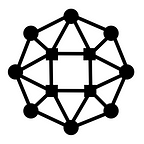Newsletter Week 5
Our 11th Newsletter: Find out what happened this week!
TLDR:
- Concept of the week: When reading about cryptocurrencies you may have come across terms such as “layer one or layer two protocols.” These are foundational concepts for understanding the technical aspects of digital assets are protocols and layers, namely layers and protocols. Ultimately they facilitate data sharing and dictate processes such as transaction validation, system security, the interaction between participating nodes, etc.. Layers specify the set of protocols used in certain components of the blockchain architecture. Think of it as different layers to a cake with each layer serving a unique purpose. The layered architecture of blockchain technology can be split into six categories which then are grouped into three distinct layer protocols. Many different crypto assets (such as ethereum) are essentially these layered protocols. Read more to find out and understand why!
- Joe looks into a new alt coin (read more bellow!)
Concept of the Week: Layers and Protocols
When reading about cryptocurrencies you may have come across terms such as “layer one or layer two protocols.” These are foundational concepts for understanding the technical aspects of digital assets are protocols and layers, namely layers and protocols.
Let’s begin with explaining protocols. There are various types of protocols. Ultimately they serve as a set of rules which allow for the exchanging and processing of data between computers. Think of it as a language between humans; without a shared language (e.g. english) they would be able to engage and communicate. Blockchain protocols facilitate data sharing and dictate processes such as transaction validation, system security, the interaction between participating nodes, etc.. Ultimately, protocols are what facilitated the decentralization inherent within crypto by defining how information and data is distributed without the need for a centralized entity.
Layers specify the set of protocols used in certain components of the blockchain architecture. Think of it as different layers to a cake with each layer serving a unique purpose. The layered architecture of blockchain technology can be split into six categories which then are grouped:
The Hardware/Infrastructure Layer, also known as Layer 0, can be seen as the baking sheet which makes the cake possible. It involves all components which allow for blockchain networks to function and be a reality, this includes the internet, hardware and connections.
The Implementation Layer, also known as Layer 1 protocols, is the system associated with the base architecture of a blockchain network. These protocols set the rules and parameters for the entire network such as the consensus processes, transaction throughput, dispute resolution, etc.. Bitcoin and the Ethereum Network are all layer 1 protocols. Meaning when you purchase these tokens you are investing into a layer 1 token.
Layer 2 protocols, also known as Layer 2 (L2) Solutions, are the protocols and overlapping networks which sit on top of the base layers and provide scalability. This is primarily to provide interoperability features and scalability by carrying some load. The primary difference from layer 1 protocols is that layer 2 is a third-party integration used in conjunction with layer one to enhance system efficiency and the number of nodes whilst layer 1 is the blockchain of the decentralized ecosystem. Thus layer two crypto are tokens and systems which are built on top layer 1 networks. An example is Polygon (Matic) which is a cryptocurrency built on top of the Ethereum network to address ETH’s scalability problems when facing mass adoption.
The application layer, also known as Layer 3 protocols, consists of protocols which all applications run on the blockchain. The applications are known as Decentralized Application (Dapps). Layer 3 is ultimately what gives blockchain real-world applications by allowing for the implementation and execution of use-cases.
Sources:
- https://cointelegraph.com/blockchain-for-beginners/a-beginners-guide-to-understanding-the-layers-of-blockchain-technology#:~:text=Protocols%20make%20use%20of%20layer,chain%20transactions%20follow%20the%20regulations.
- https://www.cloudflare.com/learning/network-layer/what-is-a-protocol/
- https://coinmarketcap.com/alexandria/article/what-are-application-layer-protocols
Investor Joe:
Previous positions remain unchanged. This week Joe continues his DCA strategy with 100$ split as:
Quick take on Helium (HNT)
Helium has the grandiose ambition to take over the telecommunications sector with its decentralized machine network. The network is built up hotspots or ‘gateways’ that also act as miners (they look and act similar to a simple home wifi router). Based on the coverage that your miner/hotspot has as well as the traffic on it, Helium miners are rewarded with Heliums native token HNT. A few of many use cases include for these hotspots: IoT sensors, tile-like trackers, dog tag trackers
(Map Link) This shows a map of all miners in the world. Here’s a screenshot of Stockholm (each hexagon has >1 miner in it)
Portfolio Stats
This weeks edition was written by Alex Ekberg & Erik Gunnarsson
Thanks for reading!
If you have any comments, ideas or thoughts you would like to express to us, please send us feedback here
DISCLAIMER
This is not financial advice, and is purely for educational purposes only, alwaysDYOR!
DISCLOSURE: SOME DIGITAL ASSETS SOCIETY MEMBERS ARE INVESTED IN CERTAIN TOKENS AND COINS WHICH MAY HAVE BEEN SPOKEN ABOUT ABOVE. THESE STATEMENTS ARE INTENDED TO DISCLOSE ANY CONFLICT OF INTEREST AND SHOULD NOT BE MISCONSTRUED AS A RECOMMENDATION TO PURCHASE ANY COIN OR TOKEN. THIS CONTENT IS FOR INFORMATIONAL PURPOSES ONLY AND YOU SHOULD NOT MAKE DECISIONS BASED SOLELY ON IT. THIS IS NOT INVESTMENT ADVICE.
